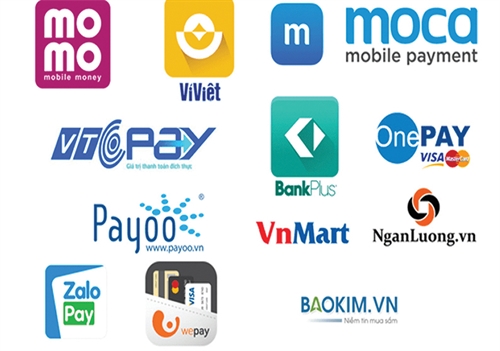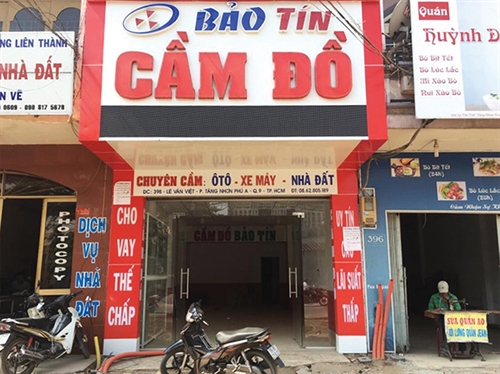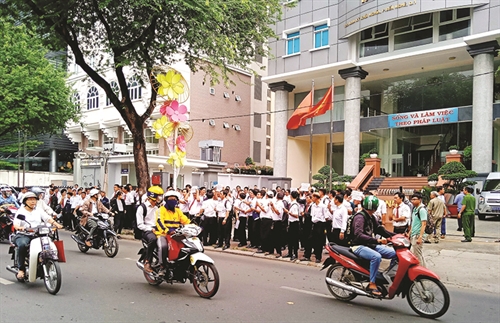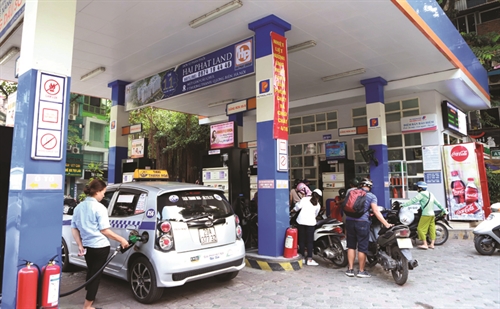Development of fintech and mobile payment in Vietnam
According to a recent research by Solidiance, an Asia-focused corporate strategy consulting firm, Vietnam’s fintech market reached USD 4.4 billion in transaction value in 2017 and is estimated to grow to USD 7.8 billion by 2020[1]. As per the Vietnam Digital Landscape 2019[2] released by WeAreSocial early this year, the country, with a population of nearly 97 million, has 64 million Internet users and 143.3 million mobile subscribers, with 72 percent of the adult population using smartphones. Given the fact that Vietnam is aiming to move toward a cashless society with the targets of reducing cash transactions to below 10 percent and increasing the rate of account holders among people aged 15 years or older to at least 70 percent by 2020[3], there is a vast space for development of e-payment services in the country. It is not to mention a recent proposal that all urban residents would use cashless methods to pay their tuition, utility and other bills from December this year.
In fact, the digital payment sector of Vietnam has seen a remarkable growth. According to Statista, the total transaction value in this segment mounts to more than USD 8.5 million by 2019. The number is expected to grow to USD 13.7 million by 2023 at an annual growth rate of 12.7 percent during 2019-23[4]. In just three years, from 2016 to 2018, the number of fintech companies operating in Vietnam increased from 40 to nearly 100, including 26 intermediately payment service providers.
The e-wallet market is blooming too. According to statistics from the State Bank of Vietnam (SBV), the value of e-wallet transactions in 2017 reached VND 53.1 trillion (USD 2.3 billion), an increase of 64 percent compared to the previous year’s figure. For the time being, the SBV has licensed more than 20 e-wallet apps, including many foreign names such as Samsung Pay, Alipay and Amazon as well as several domestic players like Vi Viet and ZaloPay.
 |
| The Vietnam’ e-wallet market is now blooming__Photo: Internet |
Proposals on management of the mobile payment market
In order to better manage the e-wallet market, the SBV has recently introduced a draft circular revising Circular 39 of 2014 on intermediary payment services, which is designed with a view to boosting the development of the business while ensuring security and safety of e-payments.
Particularly for e-wallet transactions, the draft says that the total value of e-wallet transactions, including transfer of money from an e-wallet to another and payment for lawful goods and services, must not exceed VND 100 million (USD 4,250) per month, for individuals, or VND 500 million (USD 21,250), for organizations. Earlier, the SBV has once intended to set a limit of VND 20 million (USD 850) per day on individual customers but latter decided to withdraw the proposal. “The SBV will abolish the cap on daily transaction value applicable to individuals,” Pham Tien Dung, Director of the SBV’s Payment Department, was quoted by the CafeF[5] as saying.
“Compared to other countries in the world, the transaction value limit of VND 100 million per person per month is not low at all,” Dung said, adding that at present the average e-wallet transaction value is just VND 58,000 (USD 2.5) per day or VND 1.74 million (USD 75) per month. However, after taking into consideration experts’ comment that the daily limit of VND 20 million is unreasonable as in fact not a few electronic items and tourism services are sold at prices higher than that figure, the central bank agrees to remove the cap.
In order to plug loopholes in the current know-your-customer (KYC) process, the SBV requires an individual or organization that wishes to open an e-wallet to provide information and papers proving his/her/its identity or status such as valid identity card or passport, birth certificate (for Vietnamese citizens aged under 14 years), entry visa or visa exemption certificate (for foreigners), or establishment decision, business registration certificate or investment certificate (for organizations).
“Any intermediary service providers should identify their customers so that upon detection of suspicious transactions, they can determine who have conducted such transactions. At present, most risks stem from anonymousness and fraud in customer information declaration,” Dung affirmed.
For the sake of convenience, the draft paper accepts various customer identification methods such as making declaration in person with e-wallet service providers, scanning and sending identity papers to e-wallet service providers, and providing information to service providers via e-KYC channels. This means that in case a customer has undergone the KYC process at a bank, e-wallet service providers may collect his information from such bank. However, provision of customer information to a third party by banks as well as the collection of user information via banks by e-wallet service providers must comply with civil agreements among relevant parties. “The SBV will further clarify the KYC process,” the head of the Payment Department said.
To use an e-wallet, the user must link it with a payment account or a debit card registered under its/his/her own name at a Vietnam-based bank. The user may top up the e-wallet via such account or card or through the receipt of money from other e-wallets opened at the same service provider.
However, “the SBV is now considering another option allowing e-wallet users to discharge their wallets without bank accounts. For example, users may give money to agents for the latter to top up such amount into the former’s wallets”, Dung was quoted by tuoitre.vn as saying. “Of course, such an open mechanism must be accompanied by strict conditions so as to avoid agents from dodging the law for illegal purposes,” he added.
In addition, the SBV will apply a raft of solutions for boosting cashless payment such as improving the legal framework, building mechanisms and policies on development of cashless payment, and proposing the Government to build a scheme on formulation of a mechanism for trial application in management of fintech operation in the banking sector.
“The legal framework regulating payment activities will be further reviewed and supplemented so as to promote the development of cashless payment and ensure security and safety of payments. Investment will be made so as to expand technical and technological infrastructure serving cashless payment, especially e-payments,” Dung said.- (VLLF)









